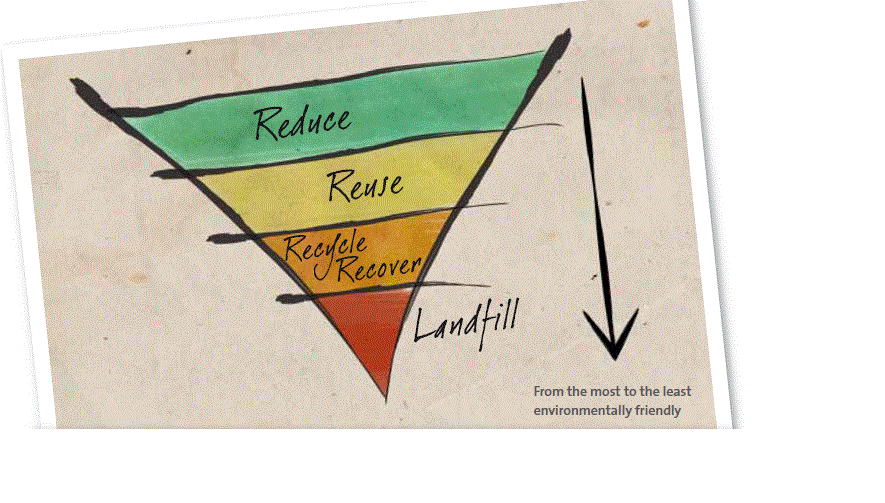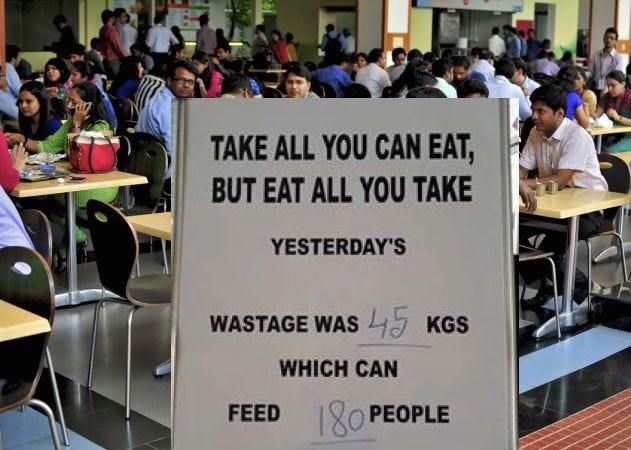The Low Hanging Fruit
Ever wondered what is most crucial or important area that we should focus on in the next two decades? Not only for us but more so for future generations. Climate Change? Sustainability? Artificial Intelligence? Or as Yuval Harari says Reinventing ourselves constantly? Actually, all of these are very much required but the easiest to achieve and one where all of us can contribute immediately is Food - Recovery and Waste Management. This is really the low hanging fruit.
The Problem
Let me quote some well-known statistics.
According to UN based Food and Agricultural Organization or FAO, of the 7 billion people about 800 million or 11% are hungry or have the problem of malnutrition. Roughly one third or 33% of the food produced in the world is wasted. Even if one fourth or 25 % of the food wasted is recovered, more than 800 million hungry people can be fed. So, if we save food through Food Recovery, give them to people who are hungry, the problem is solved!
Looks very simple. Isn’t it? but it is not happening.
And the Solution
The world has occupied its attention on issues like Global warming, dealing with Terrorism and movements like #MeToo and so on. All these are relevant, but shouldn’t we be looking at a more basic need - food? Not that nothing is being done about this problem. Cutting global food waste in half by 2030 is one of the U.N.’s top priorities and is one of 17 goals for sustainability. Many solutions have been formulated like setting up food banks, conducting assessments, using Apps for using surplus restaurant food, laws prohibiting wastage in supermarkets etc.
To put it simply, the mantra is following the 3Rs Reduce - Reuse and Recycle and thereby reduce the quantum of waste at the landfill. This not only solves the problem of food waste
but also helps the environment and produce energy.
What can we do?
@ Home
There are plenty of ways by which we can address the food wastage problem by taking action at our home front. This includes better inventory planning while buying groceries, re-purposing the waste during cooking through innovative recipes, converting the inevitable organic waste to compost etc.
To re-purpose waste from vegetables, a few recipes which I have tried out myself as experiments are
Orange Marmalade
A homemade version made from orange peels. Not exactly like the original but it can help as a filler in a sandwich or as an accompaniment for Rotis. A recipe on You Tube
Watermelon rinds Sabji
This was probably most successful of all my experiments. The dish came out well. It seems to be quite popular as there were number of recipes on YouTube.
Lime and Lemon Peels Pickle
The leftover peels from lime or lemon which usually goes to the garbage or compost can instead be used to make a pickle with your choice of spice level. My trials did not exactly produce the version which my grandmother would have turned but all the same good enough as a source of vitamin C. A recipe on You Tube
@ Restaurants & Hotels and @ the Workplace
The number of people eating out or using take out services for food is on the increase. At the workplace and educational institutions, we have cafeterias, canteens and dining halls. Some examples of food recovery methods include conducting food consumption audits, converting organic waste to compost, reuse and repurpose of waste to useful products, installing cold storage facilities in the farm to fork supply chain etc.
I had a chance to conduct a survey food waste and possible solutions being practiced. This was done for a section of the restaurants and groceries in Chennai, India and the result showed many opportunities e.g., Community composting, Biogas generation and Coffee Waste utilization.
Some thoughts
@ Home or @ Restaurants & Hotels and @ the Workplace there are ample opportunities for getting involved in projects which can save or recover food, save the environment and generate energy. These are initiatives with low capital investment with payback period often less than a year. A great chance for entrepreneurs, for professionals to be a part of corporate social responsibility or get engaged in not-for-profit organizations outside their workplace.
Surely, a low hanging fruit. Isn’t it time we pitch in?










